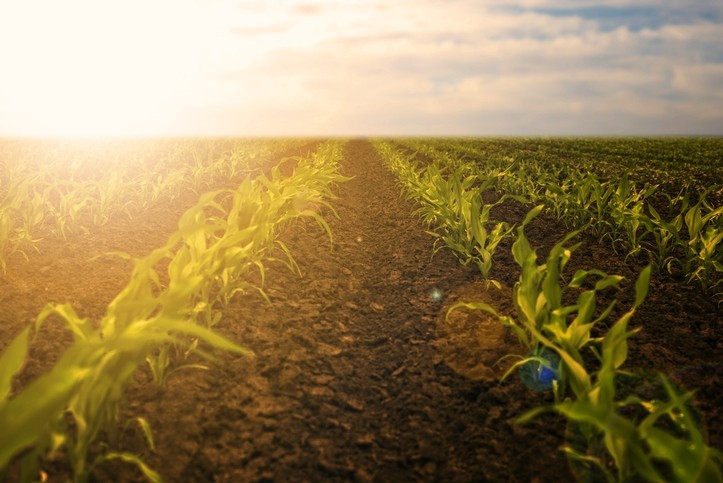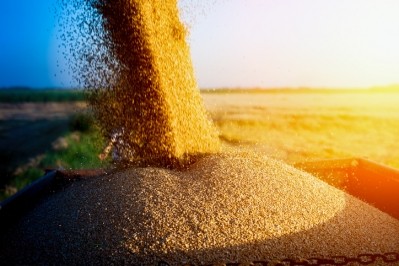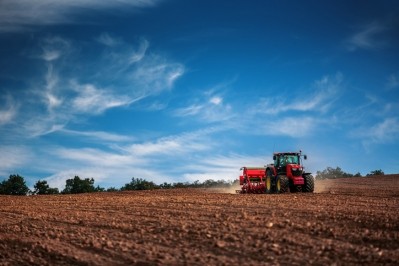USDA: Corn sees slow development as soybean planting nears end

“The problem with a cool wet spring is that it impacts the entire growing season,” said David Widmar, agricultural economist with Agricultural Economic Insights.
The US Department of Agriculture (USDA) released details of feed crop planting and production late Monday [July 8].
As corn planting has ended and soybean planting nears its conclusion, there remain some questions about how to account for the final number of acres to be planted, said Widmar.
“Early in the season, if we plant 10% of the crop, it’s because 10% of the acres were planted – a planter crossed the field – but, as we got to the end of this very late planting season, which is very unusual historically speaking, and historically late for corn, it’s unclear how the last bit of planting got finalized,” he told FeedNavigator. “Was it because of planters crossing the field? Or, was it because producers made a decision not to plant?”
“The way that [the USDA crop progress] survey was designed, a producer electing to do something else other than planting – it would also trigger that finish,” he added. “It’s sort of planted or to be planted is an important distinction there.”
The USDA June report on total planted acres is considered to have added to some of the confusion, he said. Producers across the Corn Belt will be re-surveyed in July to clarify how many acres were planted in what crop.
“It’s going to take us until September or October to really figure all that out,” said Widmar.
Moving into the growing season, the focus will be on weather, crop development, crop conditions and how production compares to previous years, he said. There also could be increasing concerns about frost in the fall, especially for some of the late-planted corn.
Corn maturity
The planted corn crop is continuing to see an influence from the slow planting season as development trails earlier years, said the USDA.
The majority of the crop, about 98%, had sprouted by the week ending July 7, the department said. The states that have not seen the entirety of their crop emerge include Illinois, Indiana, Kansas, Kentucky, Michigan, Missouri, Ohio, Pennsylvania and Wisconsin.
However, the crop is just starting to see corn silking start, the department said. Overall, about 8% of the crop has reached that stage of development – down from 34% last year.
Among the 18 states responsible for the majority of the corn crop, those witnessing the most crop development include Kentucky, Missouri, North Carolina, Tennessee and Texas, the department said. However, six states have yet to see silking start.
Corn crop condition saw a slight improvement from last week regarding the amount of the crop earning a ‘good’ or ‘excellent’ rating, the USDA said. However, this year about 57% has earned one of those scores, a drop from the 75% considered good or excellent at this point last year.
Soybeans progress
Soybean planting is being reported as almost complete for the 18 states responsible for the majority of the crop, the USDA said. About 96% of the crop has been planted at this point, but the pace lags the one set last year as the entire crop had been planted at this stage.
The states furthest from completion include Missouri and Ohio, with 10% and 12% of the crop remaining to be planted, the department said.
About 90% of the planted acres have sprouted at this point, the department said. Although emergence was complete at this time last year.
The only state to see sprouting finish has been Louisiana, the department added.
Some states also have seen the next stage of development start as about 10% of the crop has started blooming, the USDA said. On average, about a third of the crop is blooming by now, and last year 44% was.
Crop conditions declined slightly from last week with about 53% of the crop earning a good or excellent rating, the department said. Last year, at this point, about 71% received those scores.
Wheat development
On the other end of the spectrum, about 47% of the winter wheat crop has been harvested, the USDA said. Again, however, the pace is behind last year, and on average, when about 61% had been collected by this point.
About 56% of the spring wheat crop has headed, the department said. But, last year about 78% had reached that stage by this time.
The condition of the spring wheat crop is slightly below last year’s with 78% of the crop being considered good or excellent rather than 80% of the crop, the department said. However, the condition of the winter wheat crop is exceeding the previous year with 64% of the crop earning top grades instead of 37%.
Sorghum, oats and barley
Although it continues to trail the pace set in earlier years, sorghum planting has almost ended with about 97% of the crop in the ground, the USDA said.
The maturing process is staying closer to the pace seen in previous years as 22% of the crop has headed, and 13% of the crop is starting to color, the department said. At this point last year, 25% of the crop had headed and 16% was coloring.
The barley crop also is continuing to mature as more than half has headed, the department said. However, last year about 74% of the crop had reached that stage.
Similarly, oat development also lags the rate established in other years, the department said. Last year, and on average, about 90% of the crop has headed by this time, while this year only 74% has reached that point.











